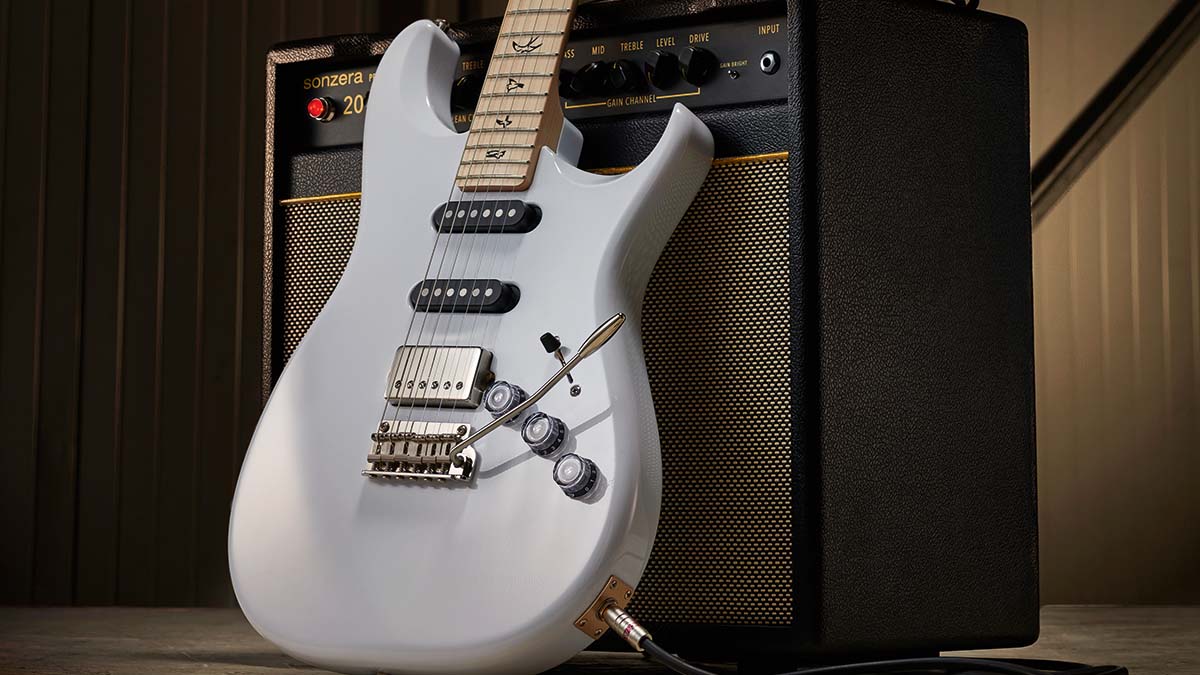Guitar World Verdict
For the PRS player, the Fiore comes across as a ‘beater’, a guitar to play out while those posher guitars stay safe at home, and could easily draw in other players who want to taste and feel the quality PRS proposition without the bling or price tag.
Pros
- +
Typically detailed, considered build.
- +
Excellent single coils and matched humbucker voicing.
- +
Handy ‘extras’ via the switched tone pots.
- +
A very good old-school ‘SuperStrat’.
Cons
- -
Limited colours, only one is translucent.
- -
No options.
- -
No lefties.
- -
Our sample was overweight.
You can trust Guitar World
John Mayer’s signature Silver Sky needs no introduction. However, bolt-on electric guitars go back to the very beginnings of PRS when the company was far from the household name it is today.
If the new 2021 Fiore, co-designed with PRS’s latest signature artist, Mark Lettieri, comes across as a Silver Sky with a bridge humbucker (not a bad idea, actually), in reality it’s quite its own thing.
The two guitars do share that same bolt-on neck joint and full Fender scale length, but Mark’s vision of an HSS ‘SuperStrat’ is very different to John’s more vintage concept and, in many ways, actually seems more like a PRS, rather than – sorry! – a copy with the wrong headstock. Here, for example, we get the right headstock: PRS’s classic three-a-side design, which has graced pretty much every PRS guitar since 1985.
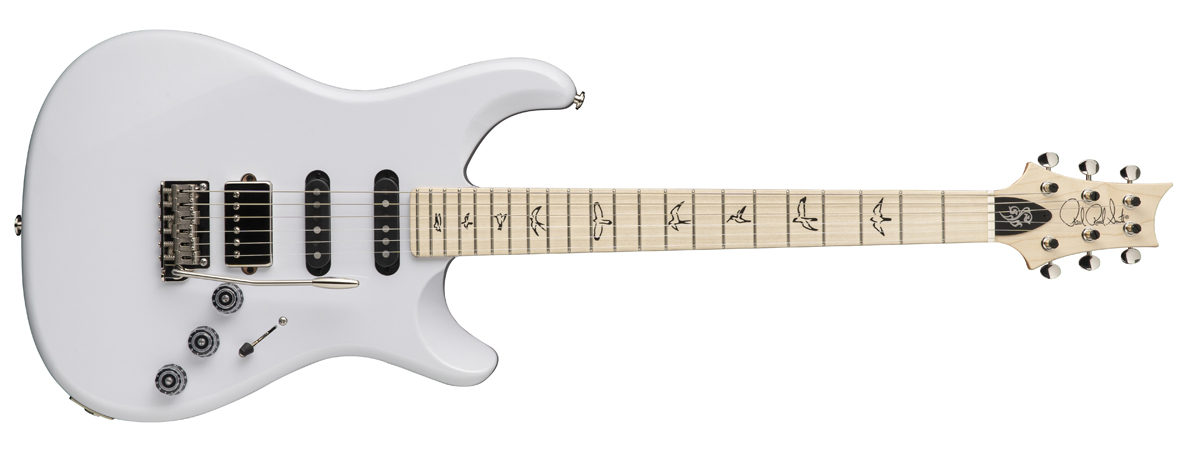
The direct-mount pickups and rear-mounting controls are much more PRS, too, as are the side-placed output jack, not to mention the full-sized bird inlays, as opposed to the smaller outline inlays of the Silver Sky. The body wood changes to swamp ash – Fraxinus Americana, known as white or American ash.
It is, of course, synonymous with early Fender, although currently it’s classed as critically endangered thanks to the emerald ash borer beetle that has decimated many of the ash species in the USA. Fender has replaced it with roasted pine for the American Pro II range, but plenty of smaller-production, high-end makers still cherish this typically striped-grain lightweight wood.
Of the three colours offered on the Fiore, the wood’s distinctive grain is only visible through the translucent red Amaryllis option: Black Iris and the bright-white Sugar Moon (seen here) are opaque colours.
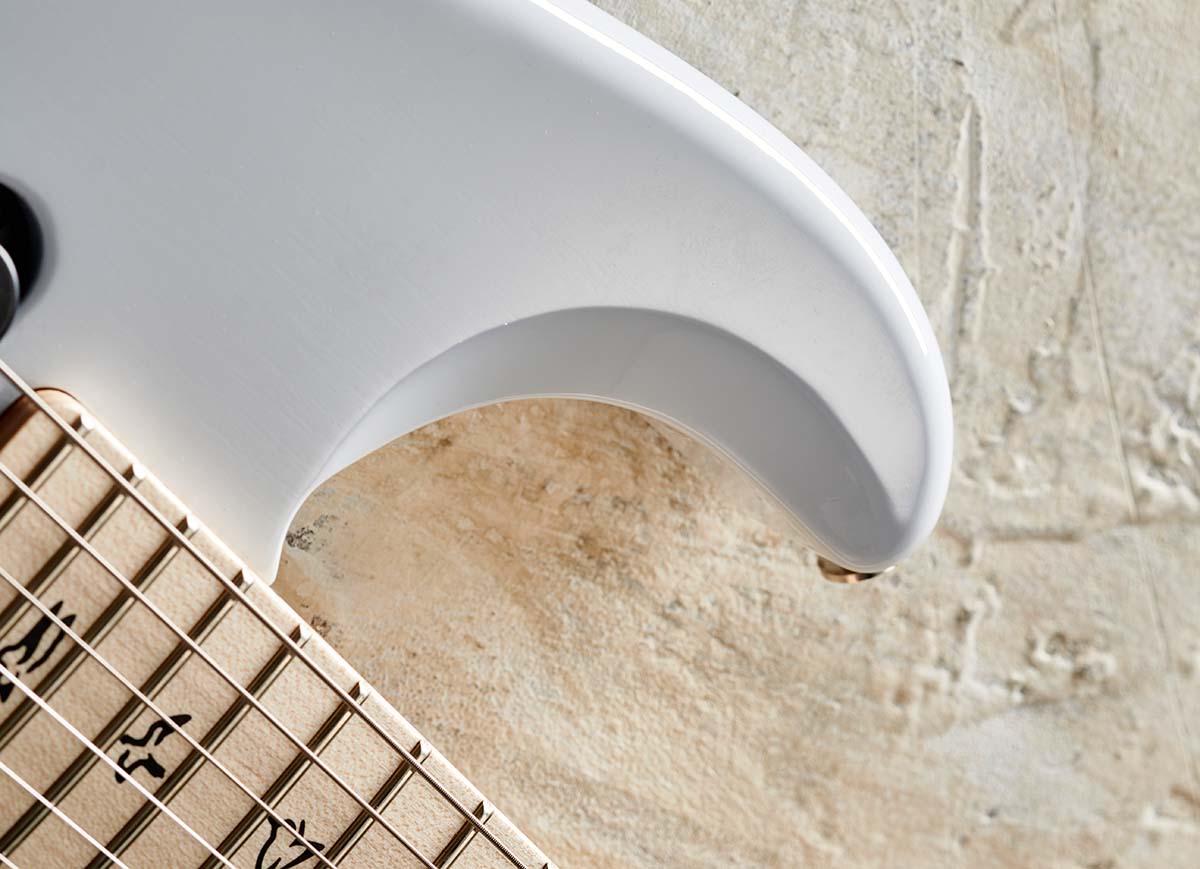
We can’t help thinking a semi-translucent Fender-style blonde might have paid homage to this striking wood. Swamp ash is also known for its light weight, but at 3.96kg (8.71lb) it’s considerably heavier than our reference Silver Sky by 0.65kg (nearly 1.5lb in old money).
All the latest guitar news, interviews, lessons, reviews, deals and more, direct to your inbox!
Material and finish aside, the actual outline subtly redraws the Fender blueprint and is very slightly different from the Silver Sky, as we detail in our direct comparison between these two bolt-ons on page 82.
While the Silver Sky launched with a rosewood fingerboard (maple was added for 2020), the Fiore starts with maple. Like the headstock, the Fiore sticks to the standard PRS fingerboard radius of 254mm (10 inches) and uses standard PRS USA Core fretwire and large-topped bone saddle. PRS redesigned the Fender-style vibrato on its original guitars then introduced a new, more vintage-Fender-inspired version for the Silver Sky.
Mark states he’s a two-post guy and one reason for the delay in the shipping of the guitar is that this design took longer to finalise. So we have those two pivot posts (4.96mm bolts that thread into collars mounted in the body, rather than screws), but the same pressed-steel saddles as the ’Sky, a steel block and top plate, plus a screw/push-in arm, here with a metal tip.
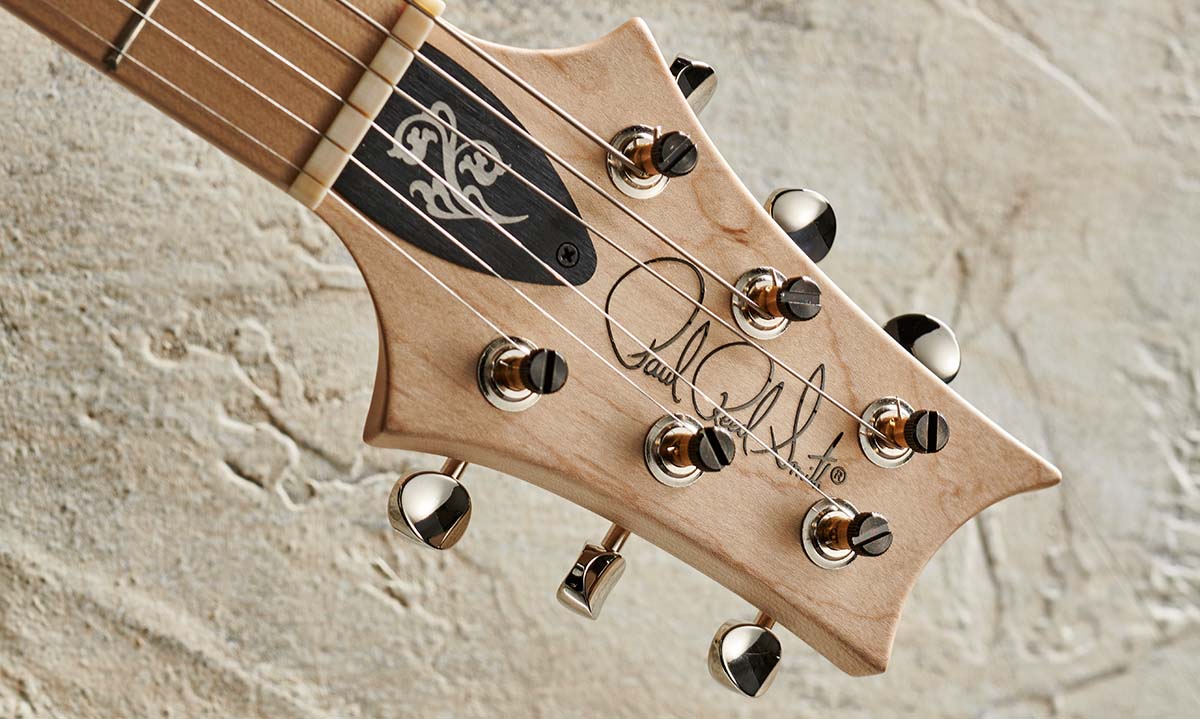
A constant area of change is in the pickups and circuit used by PRS, but typically the company is tight-lipped when it comes to specific details. While plenty of designers would have paired the well-received JM635 single coils of the Silver Sky with a bridge humbucker, for example – and PRS has plenty of those – these Fiore pickups are yet again tweaked and redesigned.
The circuit is unique for any PRS we’re aware of, too, using a pretty standard master volume and two tones (one for the two single coils, the other for the humbucker), which both have pull switches.
The middle tone control, tone 1, with the switch pulled up introduces a simple circuit known as the ‘seven sound’ or ‘Gilmour’ mod, which gives us the ability to voice the Tele-like bridge and neck (position 1 and 5), or all three together (in positions 2 and 4).
The second tone switch introduces an option of conventional series linkage of the coils with the switch down or parallel with the switch up, which gives a cleaner, brighter but still hum-cancelling voicing.
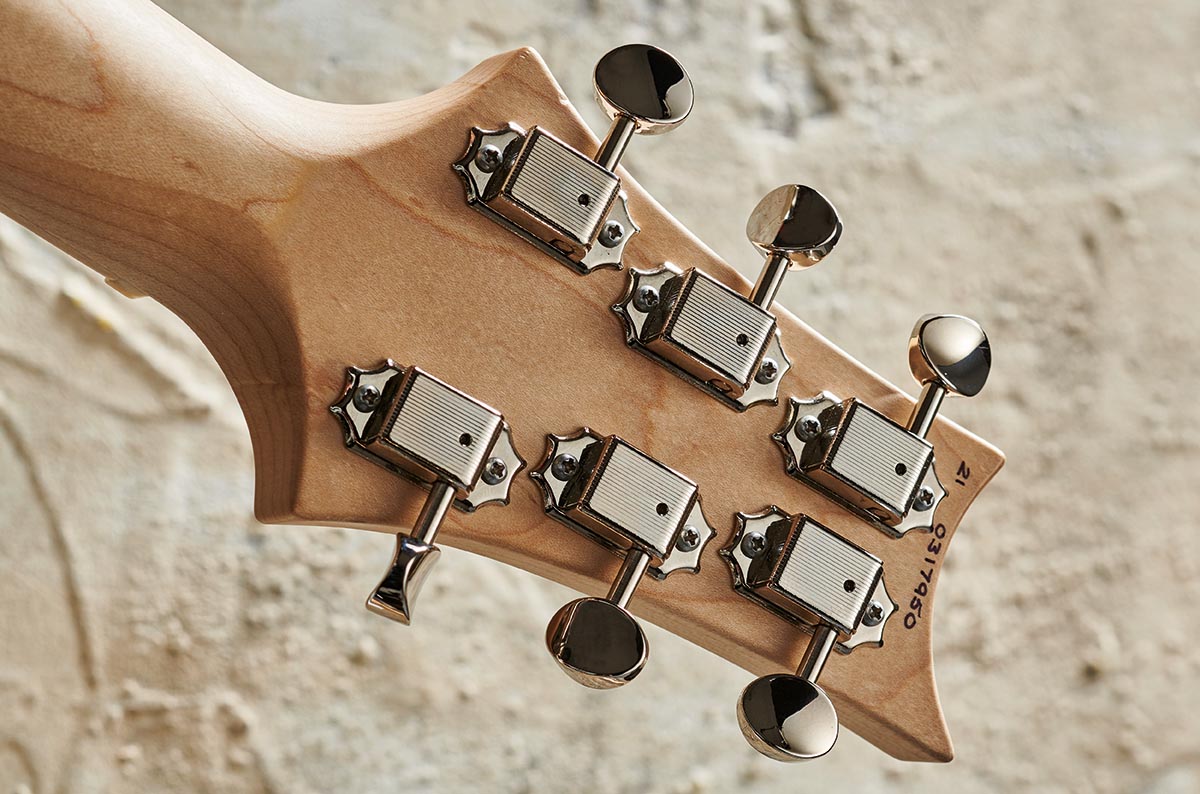
Feel & Sounds
Chunky and business-like sum up our first impressions, and using a 2016 CE24 as a base reference, the Fiore feels much less like a PRS and more a generic ‘SuperStrat’ – and plenty of those have passed through our hands over the past four decades. The Fiore’s neck profile is very different from the CE’s Pattern Thin profile, narrower in width at the nut, which measures 42.37mm, with fuller shoulders and more of a taper in terms of depth.
By the 12th fret we’re feeling old Fender-like girth, not least with the well-rolled fingerboard edges, which slightly curve in. The untoned maple has a light finish that’s smooth with none of that furry feel you can experience on a bare wood/oiled neck, while the standard PRS frets never feel ‘jumbo’, instead providing a near-perfect balance of width and enough height for easy bends.
The round-nosed heel means there are no issues with top-fret access, either. While the PRS Studio – another HSS model that’s back in this year’s line-up – reintroduced the tweaked Narrowfield mini-humbuckers with very much their own voice, a few licks on the neck pickup and you’re on very familiar territory. We spend too long here: it’s a beautiful example with depth and high-end detail and almost 3D complexity.
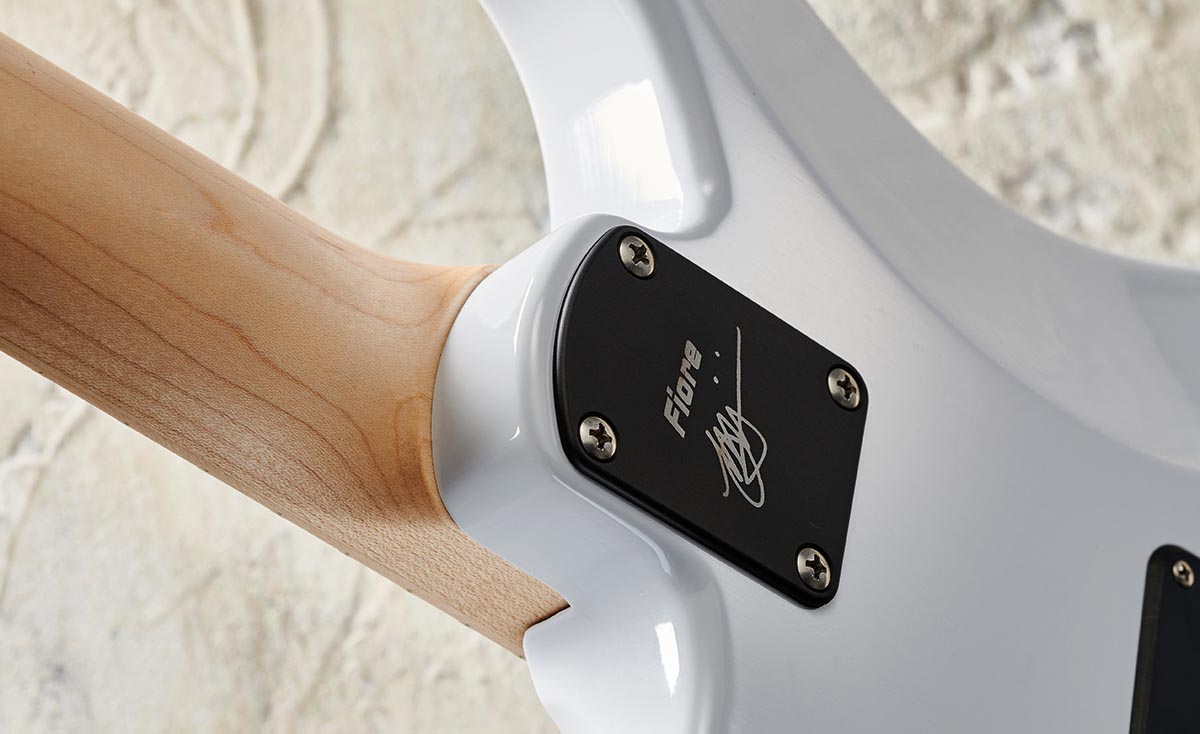
If that’s not addictive enough, the neck/middle mix certainly will be, and the extra sounds, the more direct neck and bridge, and all three together – which adds another slightly different shade of Fender-y bounce – just continue the subtle changes and shifts. We’re sorry, but if only all Fenders we’ve played sounded like this. It’s a marker of a really good guitar when it puts your own instruments into the shade.
The problem, or appeal, of any HSS configuration is what you want the bridge humbucker to do. Some like it to provide a hefty level boost; others just want a little more beef and smoothness over the standard bridge-placed single coil. It’s the latter we have here and, despite the construction style, which might suggest a bright crisp voice, the Fiore ’bucker sounds smooth, thicker and with a slight (but not excessive) output lift compared with the middle or neck.
It sounds less pushy than the 85/15 Treble on our CE 24. Comparing it with our Les Paul Classic’s retrofitted Burstbucker 2 at the bridge, it’s not a million miles away, although the Fiore’s humbucker sounds like it’s been post-EQ’d with subtly rounder highs and the almost brash upper midrange spike attenuated.
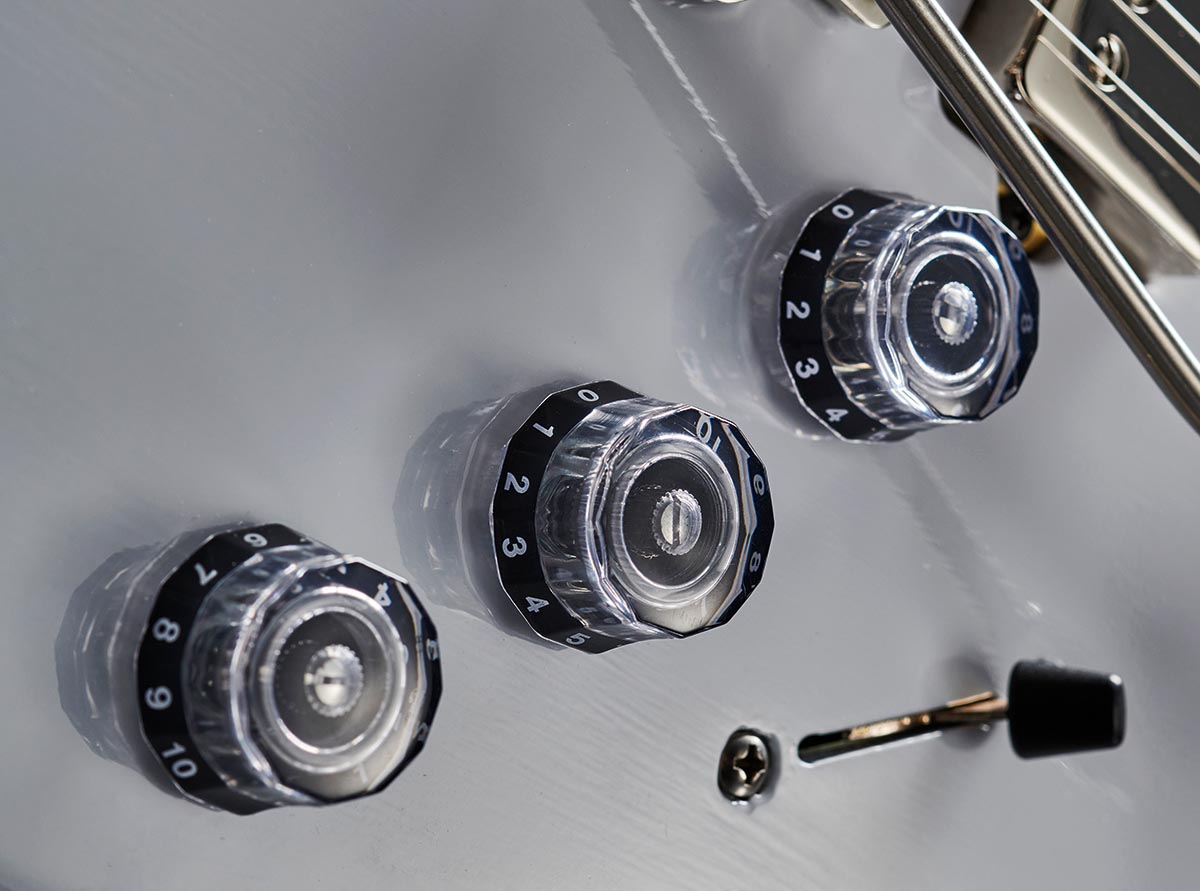
In parallel mode (the first time this simple trick has been used on a production PRS guitar), it provides a hum-cancelling thinner and brighter option that balances, output-wise, with the single coils beautifully. It almost feels that should be the standard sound and the bigger series voice should be introduced via a fast mini-switch.
As we begin to wind up the wick, this bridge humbucker impresses again: it gives us our ‘Les Paul’ in a creamy and quite thick dose but without the honk of a PAF-style or the mid-hump of an ‘over-wound’ high-output ’bucker. We suspect it might lack a little clarity on a darker-sounding guitar, but here it achieves a rare balance between girth, clarity and power.
If you come from the school of thought that believes humbuckers are just plain wrong on a Fender-style bolt-on, you probably haven’t got this far. But for those of us whose tastes reside further from the purists’ – and when it’s done as well as this – the Fiore’s hot-rod array feels like home. We just want to chuck it in the excellent included gigbag and head off to a gig.
Verdict
Let’s be honest, an HSS hot-rod bolt-on with a two-point non-locking vibrato and a couple of simple (and far from new) wiring mods is hardly groundbreaking stuff. We’ve been chopping up our Strats ever since we could get aftermarket pickups.
It also means the Fiore faces considerable competition, and while Mark Lettieri is a highly respected player he’s hardly in the John Mayer or Carlos Santana league in terms of profile. But dismiss this guitar at your peril.
Mark’s needs are little different from most working musicians and the expanded sounds, not to mention the hum-cancelling neck/middle mix and the parallel ‘single coil’ humbucker option, are real-world additions that simply might save a gig or recording session.
For the PRS player, the Fiore comes across as a ‘beater’, a guitar to play out while those posher guitars stay safe at home, and could easily draw in other players who want to taste and feel the quality PRS proposition without the bling or price tag.
Aside from the weight of our sample – which we’d wager is a one-off – it’s a faultless piece. Combine that with the very well-voiced pickups, a great neck shape and PRS’s tried-and-tested regular fingerboard radius and frets, and we’re left with nothing to criticise. Apart from the fact that it’s added yet another guitar to our wishlist!
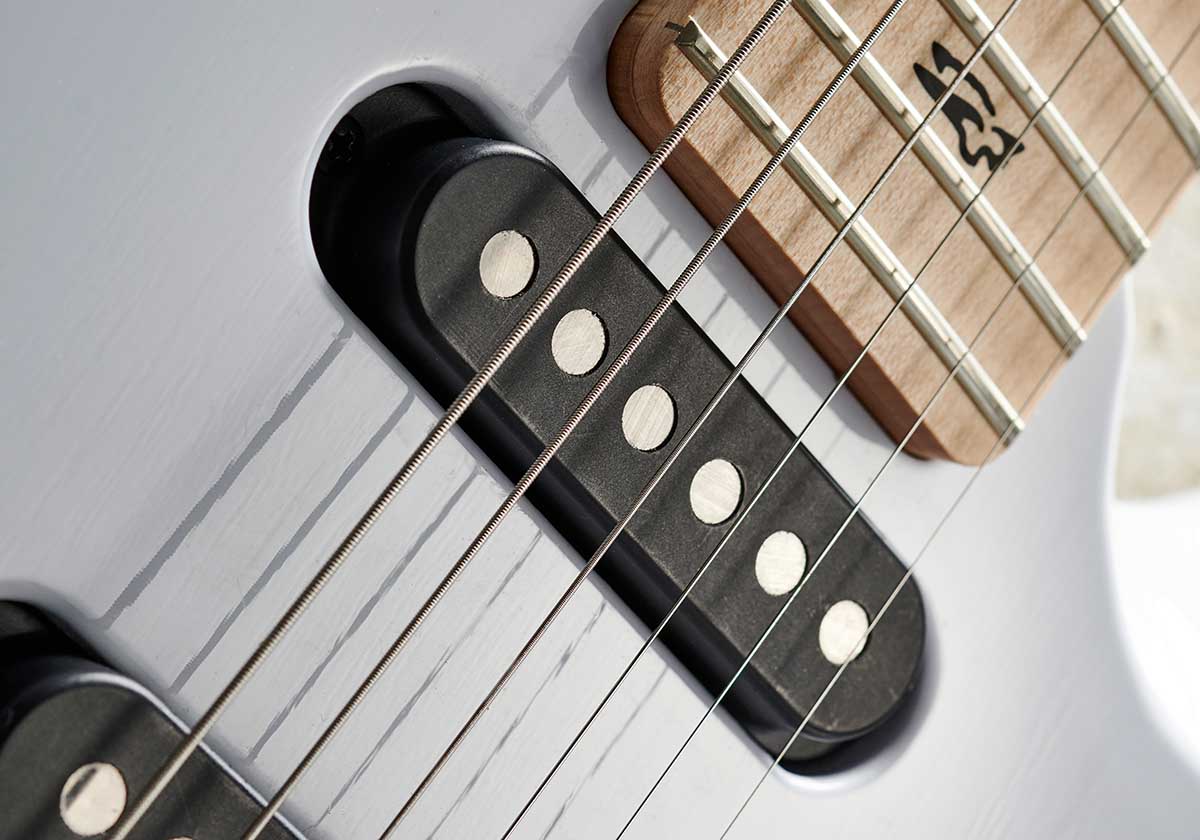
Specs
- PRICE: $2,449/£2,599 (inc gigbag)
- ORIGIN: USA
- TYPE: Double-cutaway solidbody electric
- BODY: Swamp ash
- NECK: Maple, Fiore profile, bolt-on
- SCALE LENGTH: 648mm (25.5”)
- NUT/WIDTH: Bone/42.37mm
- FINGERBOARD: Maple, outline bird inlays, 254mm (10”) radius
- FRETS: 22, medium
- HARDWARE: PRS-designed 2-post steel block vibrato, PRS-designed vintage-style locking tuners – nickel-plated
- STRING SPACING, BRIDGE: 54mm
- ELECTRICS: 2x PRS Fiore-S single coils (neck, middle), Fiore-H humbucker (bridge), 5-way lever pickup selector switch, master volume, tone 1 (neck & middle) w/ pull switch to add bridge/neck and all-three pickups to be voiced, tone 2 (bridge) w/ series/parallel pull switch
- WEIGHT (kg/lb): 3.96/8.71
- OPTIONS: None
- RANGE OPTIONS: CE 24 (£2,269), CE 24 Semi-Hollow (2,425), Silver Sky (from £2,569) and DW CE 24 Floyd Ltd (£2,639)
- LEFT-HANDERS: No
- FINISHES: Amaryllis, Black Iris, Sugar Moon (as reviewed) – gloss NOC body; tinted nitro-cellulose neck
- CONTACT: PRS Guitars

Dave Burrluck is one of the world’s most experienced guitar journalists, who started writing back in the '80s for International Musician and Recording World, co-founded The Guitar Magazine and has been the Gear Reviews Editor of Guitarist magazine for the past two decades. Along the way, Dave has been the sole author of The PRS Guitar Book and The Player's Guide to Guitar Maintenance as well as contributing to numerous other books on the electric guitar. Dave is an active gigging and recording musician and still finds time to make, repair and mod guitars, not least for Guitarist’s The Mod Squad.
